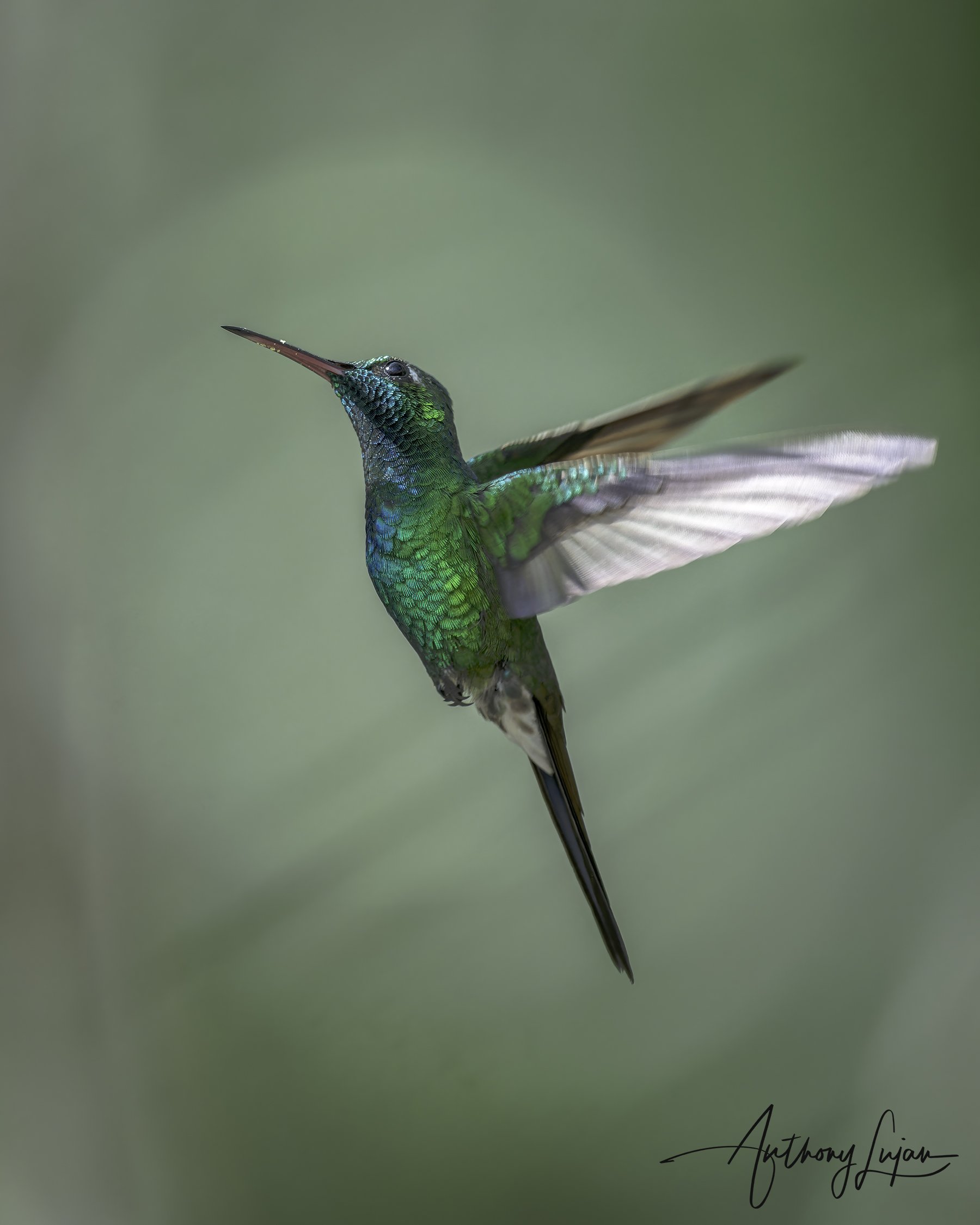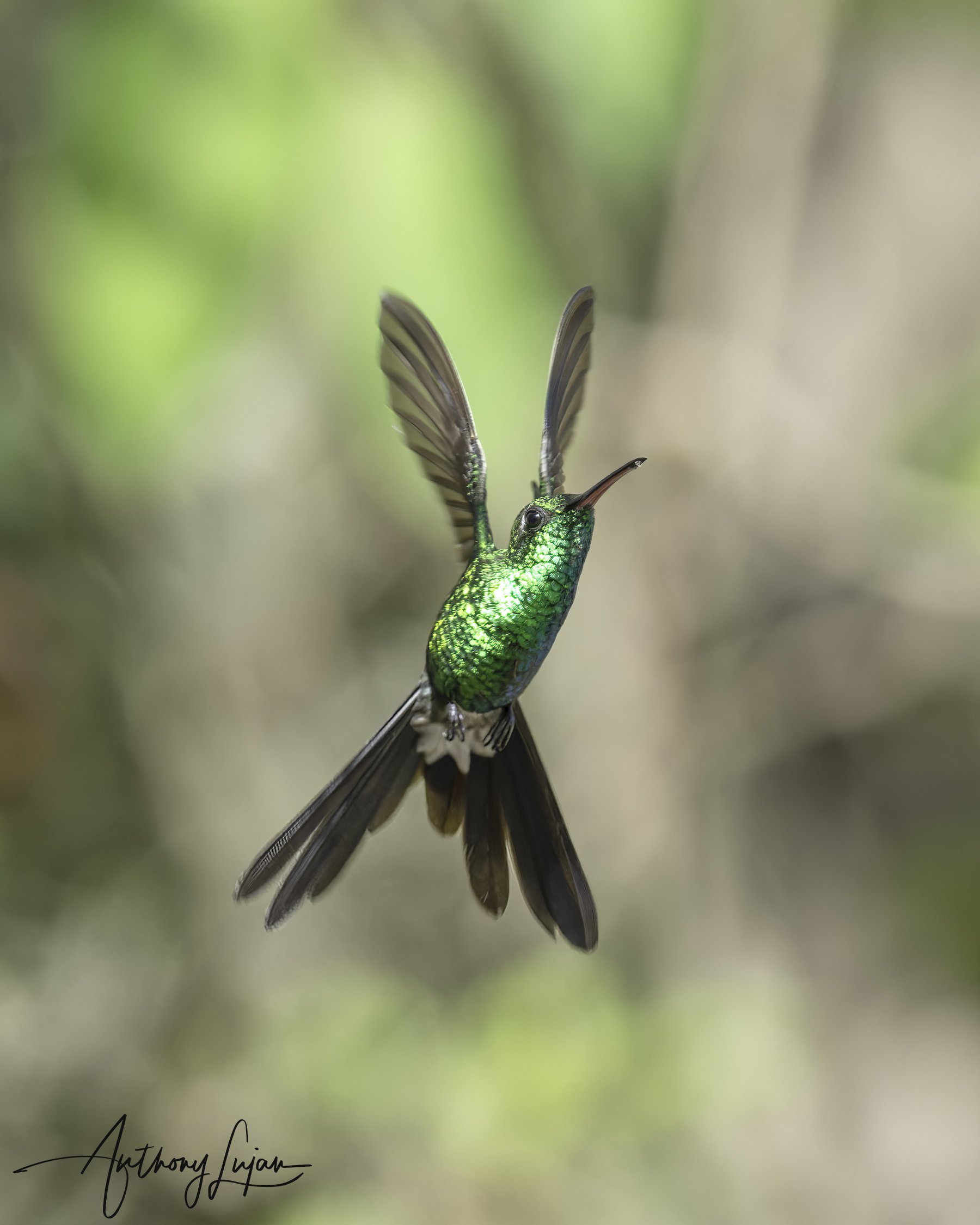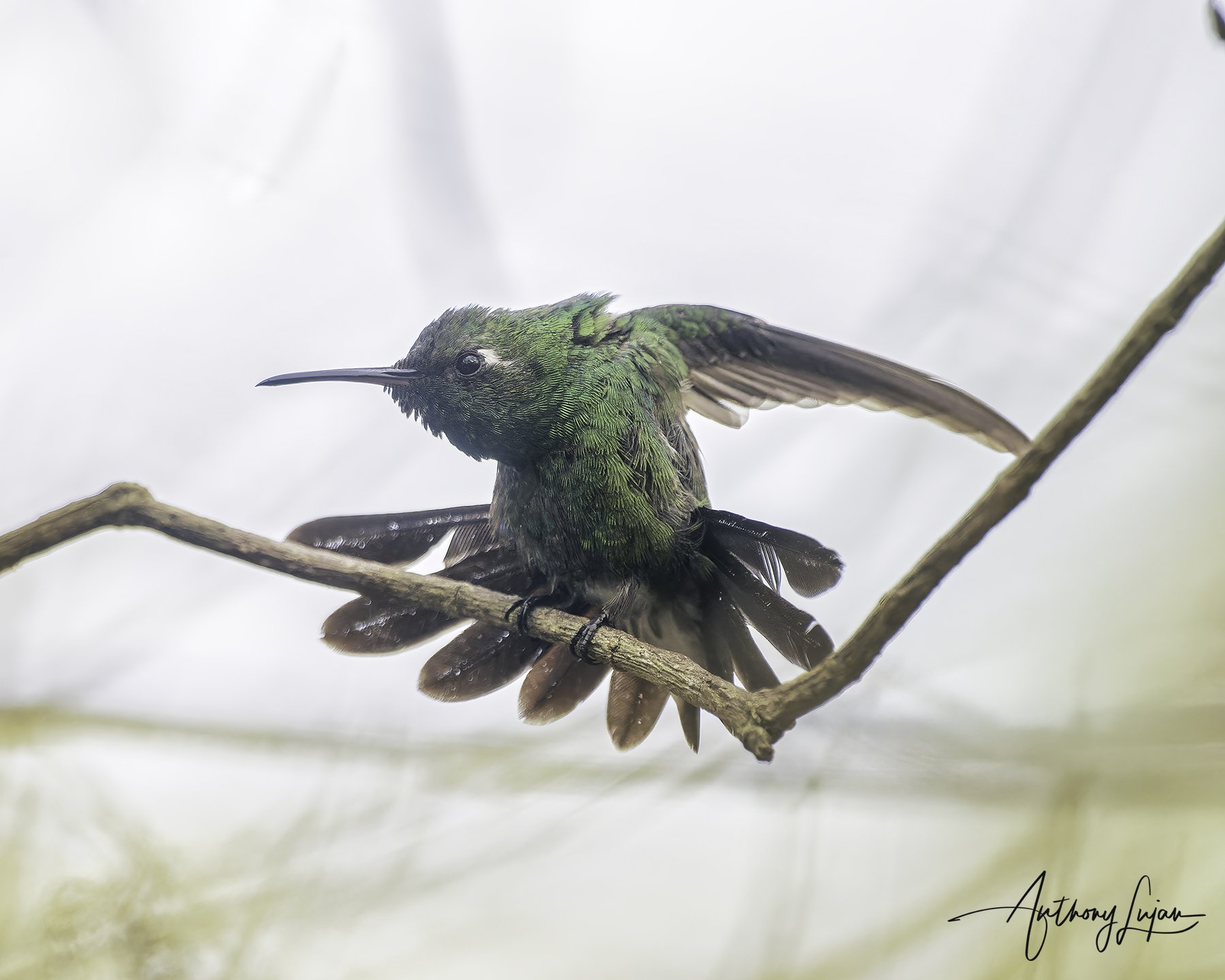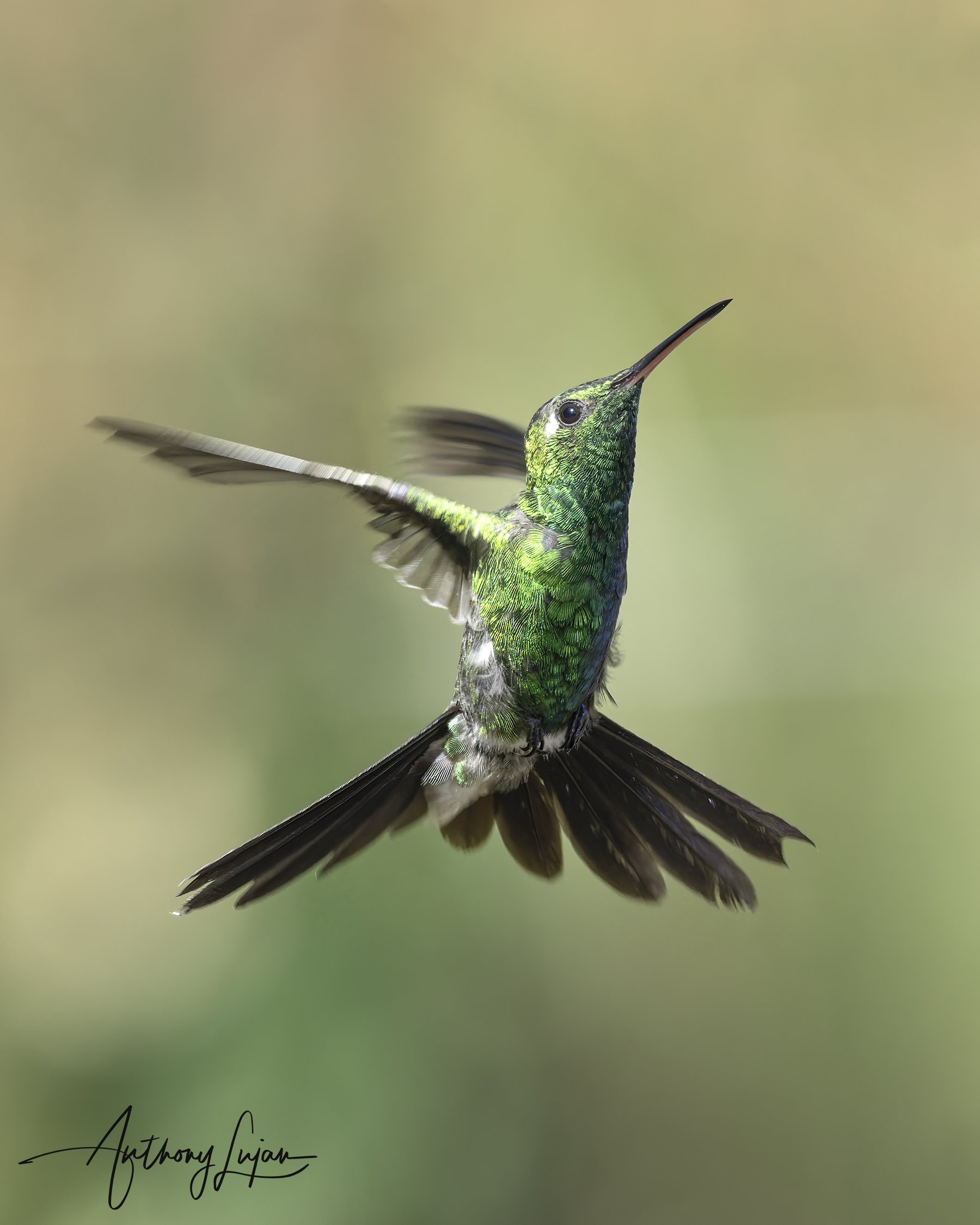Cuban Emerald
Cuban Emerald (Riccordia ricordii)
Name Origin:
The genus Riccordia honors Alexandre Ricord, a 19th-century French naturalist and surgeon who worked extensively in the Caribbean. The species name ricordii also commemorates him, recognizing his contributions to Cuban ornithology and natural history.
Quick Facts
🪶 Length: 9–11 cm (3.5–4.3 in)
⚖️ Weight: 3–4 g (0.11–0.14 oz)
🌎 Range: Endemic to Cuba and the Isla de la Juventud; also occurs on the Bahamian island of Great Inagua
🧭 Elevation: Sea level to 1,800 m (5,900 ft)
🌸 Diet: Nectar and small insects
🏡 Habitat: Dry forest, scrub, gardens, and forest edge
🧬 Clade: Trochilini “Emeralds” (Caribbean hummingbirds)
📊 Status: Least Concern (IUCN 2024)
Subspecies & Distribution
Monotypic species — no recognized subspecies.
Distribution: Found throughout Cuba, Isla de la Juventud, and locally on Great Inagua (Bahamas). Occurs in a wide range of habitats from coastal thickets and dry scrub to montane forest.
Species Overview
The Cuban Emerald is one of the Caribbean’s most radiant and adaptable hummingbirds. Its shimmering emerald plumage and fearless temperament make it a familiar sight across Cuba and nearby islands. It thrives in both natural and urban settings, often frequenting gardens, plantations, and flowering trees where it feeds actively throughout the day.
Male Description:
The male has brilliant metallic emerald-green plumage, a glittering turquoise throat, and a deep blue to bluish-black tail that flashes violet in strong light. The bill is black above with a red base to the lower mandible. Its iridescent crown and throat give it a gemstone-like appearance, especially in sunlight.
Female Description:
The female is green above, with grayish-white underparts, a slightly forked blue-black tail tipped in white, and a shorter bill. Her coloration is softer, but she retains the green iridescence typical of the species.
Habitat & Behavior:
Common in dry forests, pine woodlands, coffee plantations, and gardens, from sea level to 1,800 meters. It feeds on nectar from Hamelia, Erythrina, Inga, and Hibiscus, and supplements its diet with small insects. The Cuban Emerald is energetic and territorial, chasing away other hummingbirds—often much larger ones—from favored feeding sites. Its buzzing flight and sharp tsit-tsit calls are distinctive across its range.
Conservation Note:
The Cuban Emerald is listed as Least Concern by the IUCN and remains abundant and widespread throughout Cuba and nearby islands. Its remarkable adaptability to human-altered habitats has helped it thrive despite extensive deforestation. Conservation efforts focus on maintaining native flowering vegetation and dry forest ecosystems, ensuring continued success for this resilient Trochilini jewel of the Caribbean.





Checkout Anthony’s playlist of this species! Click the top right dropdown to see all the videos.

